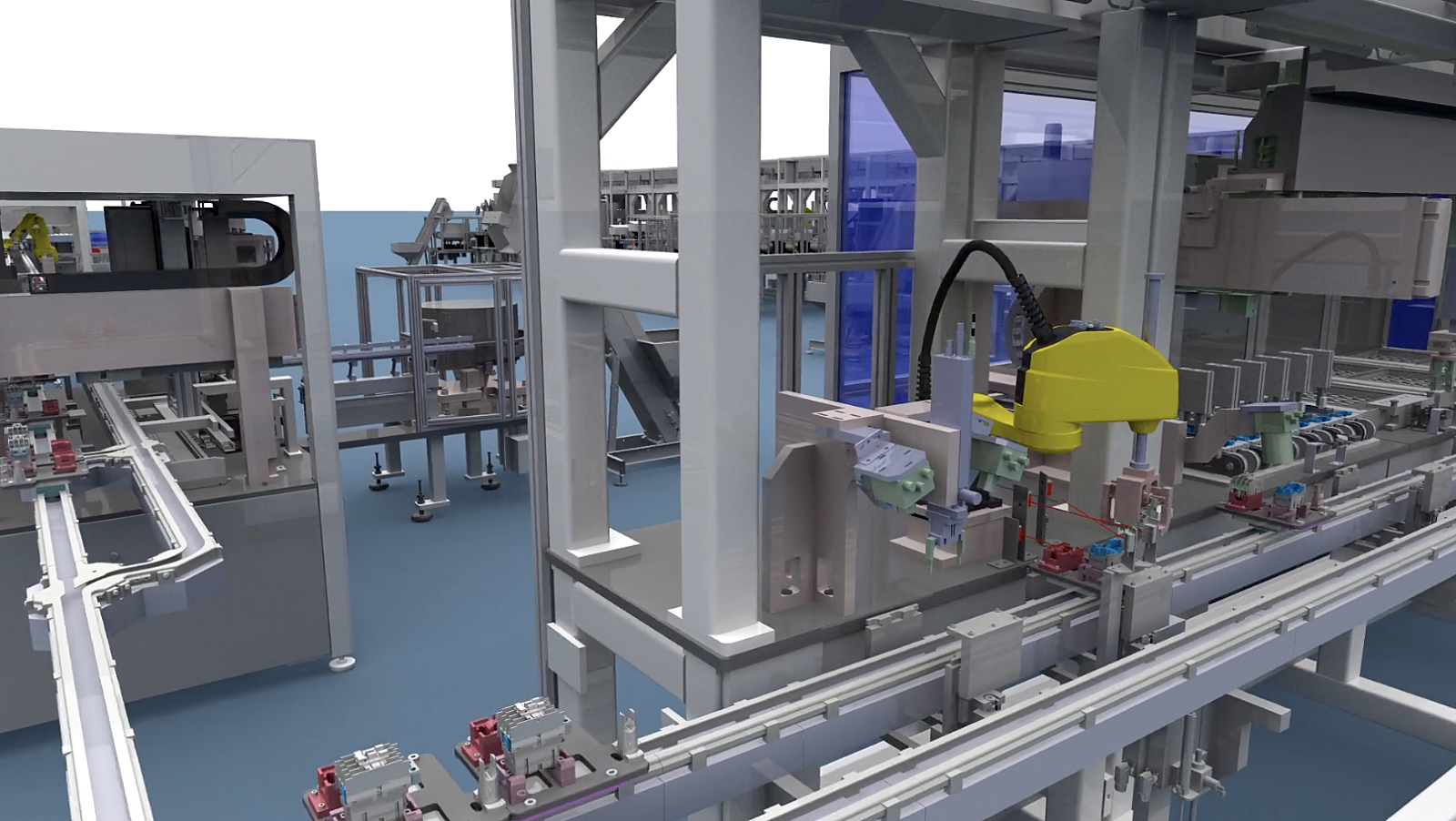Reducing Commissioning Time by 40% with a Digital Twin
The accelerated growth of data and connectivity in the last decade gives many industries the potential to utilize digital transformation. Companies are increasingly focused on maximizing the value of their data using digital tools, for instance, Industrial Internet of Things (IIoT) or digital twins. This digitization enables companies to lower operational risks, respond faster to changes, operate more efficiently and accelerate speed-to-operation by providing them with the means to execute activities virtually.
Digital twins are defined as virtual representations of physical entities or systems across their lifecycle. When applied to industrial companies, they provide engineering teams the ability to virtually perform activities such as design validation, throughput analysis and equipment testing. These activities have conventionally been done through empirical calculations or physical testing, which can be inaccurate, risky and time consuming. Due to their broad range of applications, the use of digital twins has grown at a remarkable rate and is expected to continue in the next ten years.
“The global digital twin market size, which was $3.2 billion in 2020, will likely reach $18.5 billion by 2030, witnessing a 50% CAGR between 2020 and 2030.” - Research and Markets
For industrial manufacturers and warehouse operators, the time required to expand existing facilities or build brand new facilities is critical to their top-line growth, and therefore they cannot afford delays. There are considerable investments in digital twin technology from these companies throughout the lifecycle of a facility. These investments generate tangible value for early adopters. As adoption accelerates, we are seeing the convergence of five different types of digital twins:
- Geometric Design: Digital representation of physical assets
- Physical Dynamics: Digital representation of physical processes and dynamics
- Programmed Behavior: Digital emulations of logic and animations of physical processes
- Human Interface: Digital representation of the interface between human and equipment
- Analytical Insights: Digital characterization of data, measurements, sensor readings and telematics of assets or processes
We'll discuss how industrial manufacturers are leveraging digital twins to accelerate the commissioning of new equipment and processes with a virtual representation of physical assets. This kind of virtual representation, when used for virtual testing, has proven to reduce time to steady-state operations by up to 40% compared to using conventional methods. We'll also share our learnings on how best to get started with a virtual commissioning program.
No Time to Lose: The Waterfall Effect
The development of industrial engineering systems contains three generalized phases: planning & concept, engineering & construction, and installation & commissioning.

The last phase is crucial to the final deployment of the system; therefore, time is of the essence while performing acceptance tests and resolving issues encountered within the specified equipment. These three phases are traditionally accomplished in a waterfall fashion and require the engagement of many stakeholders such as general contractors, sub-contractors, and equipment suppliers. Any undiscovered design or development issues can cause substantial problems downstream during the installation and commissioning stages of these systems.
After the Design and Engineering phases, the cost of resolving issues grows exponentially and can be up to 200-800x more compared to addressing these issues in early phases.
Using digital twin technology to digitize engineering systems has many benefits. One crucial benefit in this instance is the shortening of physical testing time during the Installation & Commissioning phase by delivering the capability to troubleshoot software and hardware in earlier stages of development. This ability effectively interrupts the dependence on the traditional waterfall approach and creates a Virtual Commissioning phase prior to physical testing.
What is Virtual Commissioning?
Virtual commissioning provides a smooth transition between traditional and virtual development by using digital twin technology to model and emulate an engineering system within a virtual environment. This emulated replica of the physical system empowers the engineering team to test and verify the system virtually, which requires less effort and considerably lowers the cost of design changes compared to physical commissioning. The engineering team can use this digital twin to test system elements including Programable Logic Controller (PLC) code logic, software integration and user interface efficacy. This virtual testing in effect converts a sizable portion of physical testing, traditionally executed on the shop floor, to be finished virtually even prior to the fabrication of equipment.
Engineering systems are often created using mechatronics systems, including motors, actuators and conveyors, connected to a main controller, typically a PLC.
In order to virtually replicate this, the digital twin includes two aspects:
- System modeling using CAD
- Controller code running on physical or simulated controllers
Equipment and processes of material handling or manufacturing systems will be modeled inside a virtual environment and their behaviors will be defined by characteristics, configurations and information that the systems have. For example, the behavior of conveyor systems will be defined by parameters like construction material, speed, direction and limits. A PLM system is a great first step toward enabling digital twin technology because a meaningful portion of the model inputs is defined within such a system. However, this is not a strict requirement. In testing PLC programs, the virtual system will be integrated with either a physical or simulated controller and the benefit of virtual commissioning comes to life.
Controls engineers are now able to test the integration of controller code with the physical system in a virtual environment, offering them the ability to do things like run various configurations of their code, recreate failure modes and conduct throughput analysis. The objective is to identify program issues and bugs, address them and even make improvements before equipment fabrication and physical testing, at which point the ability to make design changes is significantly restricted. This virtual testing leads to a valuable reduction in physical testing time, risk and uncertainty.
Kalypso has been able to reduce commissioning time and risk by as much as 40% using a digital twin.

Advancing Virtual Commissioning in Industry 4.0
We are living in a time of increased speed of technological transformation and we expect it to only accelerate faster. At the forefront of Kalypso’s capabilities sits virtual commissioning. It can help your business realize numerous benefits, including decreased commissioning times, reduced risk, increased reliability and lowered costs throughout your manufacturing operations commissioning process.
Kalypso can support you in solving business problems and remaining ahead of your competition at the forefront of the fourth industrial revolution with our ability to integrate the physical world with the virtual experience through digital twin technology. From its array of applications, virtual commissioning is merely one. Other examples of its application include facility layout planning, capacity planning and operator training. The technology can even be combined with AI and other forms of advanced technology to perform dynamic system optimization, AI-enabled control and intelligent model training.
Digital twin applications are not static, but dynamic. They are living assets that evolve and scale with your needs. Over time, the digital twin asset can be leveraged to help you realize significant breakthroughs, including leveraging the twin to generate PLC code or even remove the PLC programming step of your commissioning process entirely.
Getting Started
The possibilities are broad, but your first step is to identify and select the systems or processes that give you the biggest value. For that, Kalypso recommends a Minimum Viable Product approach. This is a repeatable and field-tested approach of selecting initial scopes of work and maximizing the demonstration of value in a short amount of time – gaining quick buy-in and setting the foundation that allows you to virtually replicate your equipment, systems, processes and even entire facilities.



